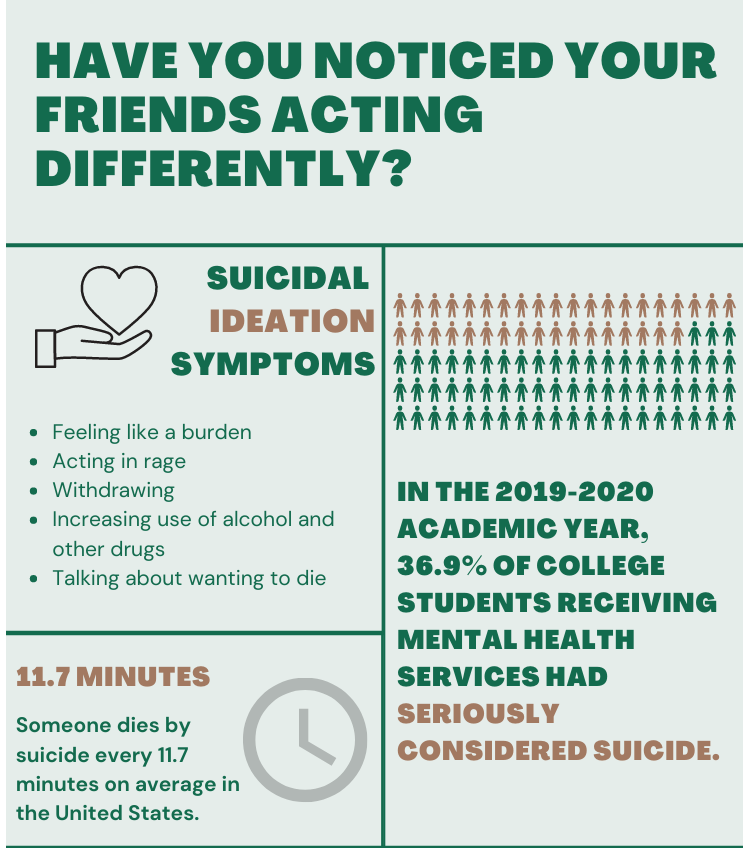What is bystander intervention?
Bystander interventions identify people or situations where suicidal ideation might occur. In the identification, there is an action to stop suicide from occurring or suicidal ideation to continue without treatment.
These are crucial in suicide prevention. These typically involve asking friends and family about suicide ideation.
Here, you will learn what to ask, how to question, and where to refer as a bystander.

Suicidal thoughts are more common than we think.

SOME STATISTICS
About 4 in 10 college students receiving mental heath services have experienced suicidal ideation.
This statistic, while startling, needs action to be solved. This is where you come in.
By asking, listening, and connecting with friends, loved ones, and other community members, we can better prevent suicide from occurring.
Take a look at our infographic (left) for more information.
Works Cited
American Public Health Association (APHA). (n.d.). Suicide Prevention. Retrieved from https://www.apha.org/-/media/Files/PDF/topics/Suicide_Prevention.ashx
Elflein, J. (2021, January 20). Suicide considerations among college students by year U.s. 2010-2020. Retrieved February 24, 2021, from https://www.statista.com/statistics/827344/suicidal-thoughts-among-college-students-receiving-mental-health-services-us-by-year/
National Institute of Mental Health (NIMH). (2019). Suicide prevention. Retrieved February 24, 2021, from https://www.nimh.nih.gov/health/topics/suicide-prevention/index.shtml
SAMHSA, & Vibrant Emotional Health. (n.d.). Talk to someone now. Retrieved February 24, 2021, from https://suicidepreventionlifeline.org/talk-to-someone-now/
SAMHSA. (2020). Suicide prevention. Retrieved February 24, 2021, from https://www.samhsa.gov/find-help/suicide-prevention